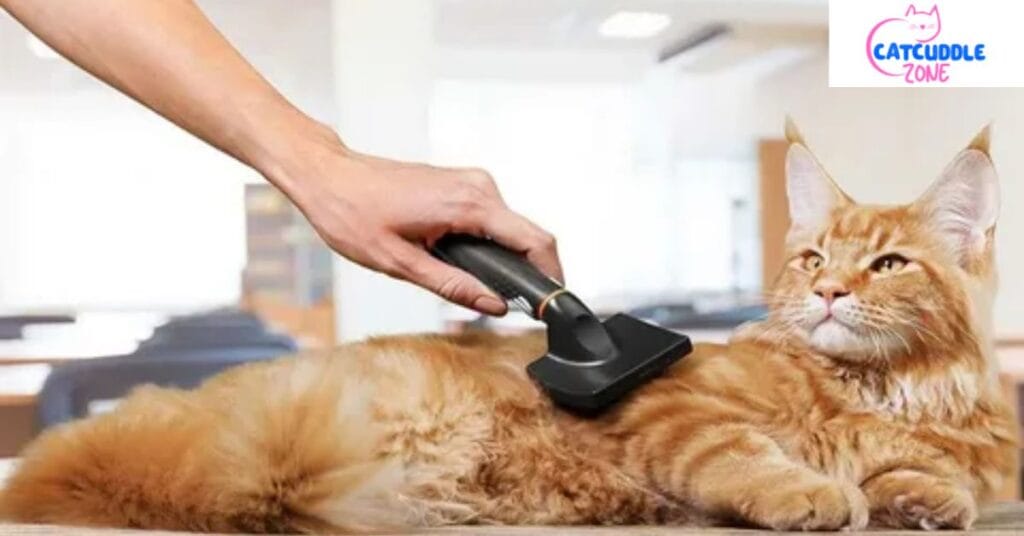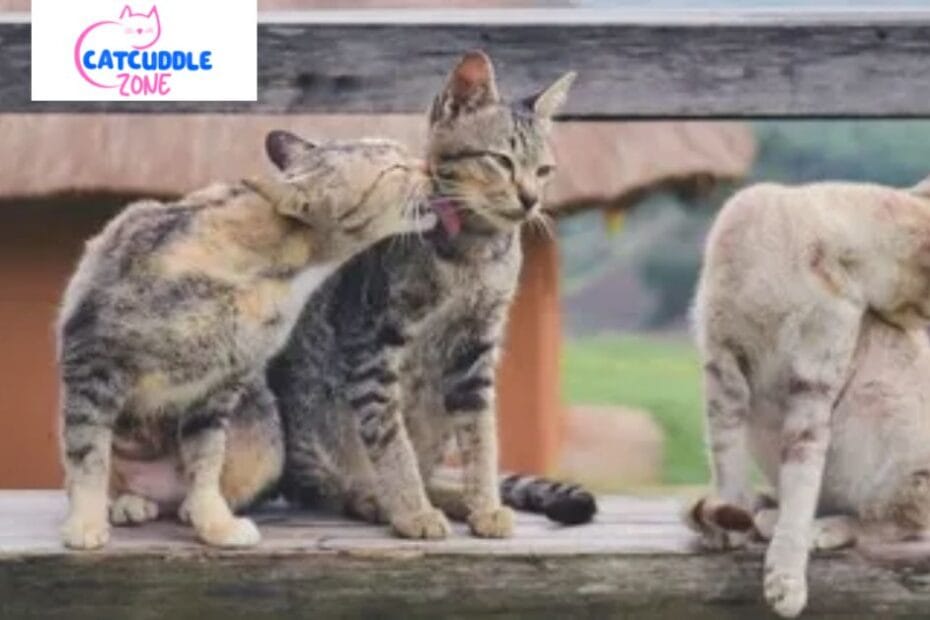Ever wondered why do cats groom each other so tenderly? This sweet habit, known as mutual grooming behavior, goes far beyond simple hygiene. Cats use it to build emotional connections between cats, share a comforting cat group smell, and create social structures in cats that reduce tension. Through these soft, rhythmic licks, they communicate trust, affection, and belonging in a way words never could.
Understanding this grooming as a bonding activity offers deep insight into how cats express love, manage stress, and keep harmony in multi-cat homes. Let’s explore what makes this intimate ritual so vital in feline life.
What is Allogrooming?
Allogrooming in cats means one cat licks or cleans another cat. It looks simple, but it has many meanings. This mutual grooming behavior builds cat social bonding. Cats do this on parts they can’t reach, like the head and neck. They don’t just clean. They share scent and show trust. This makes them feel closer and safer in their group.
Cats live by smell. By grooming each other, they create a group scent among cats. This scent makes the group feel united and helps reduce tension. A shared scent tells them, “We belong together.” This keeps the group calm and stable.
The Main Reasons Cats Groom Each Other
Cats have many reasons for this gentle habit. First, it builds grooming as affection and friendship. It shows they trust each other and want to be close. Second, it helps with grooming for hygiene in cats. They clean parts that are hard to reach, keeping each other free of dirt, fleas, and ticks.
Another reason is about power. Sometimes cat hierarchy and dominance shows when one cat grooms another. It’s not mean. It’s part of establishing social hierarchy. Grooming helps them feel calm too. It release endorphins in cats, which brings comfort and calmness in cats. Grooming can even help reduce aggression through grooming after a fight.
| Reason | Why It Matters |
| Affection & bonding | Builds trust and shows friendship |
| Hygiene | Keeps cats clean, removes fleas and ticks |
| Social hierarchy | Shows which cat is dominant or calm |
| Stress relief | Releases feel-good chemicals, lowers tension |
| Sharing scent | Creates group scent, keeps peace |
Mother Cats and Kittens – Special Grooming Bond
Mother cats grooming kittens is very special. It’s not just to clean them. It teaches kittens how to groom themselves. This is called early socialization in kittens. Kittens learn what’s normal and safe by watching and copying their mom. This is learning by imitation in cats.
This grooming helps kittens feel warm and loved. It brings comfort and calmness in cats and builds strong bonds. As they grow, kittens keep these habits and use them to make new friends.
How Grooming Strengthens Cat Friendships
Grooming as a bonding activity shows cats care for each other. When cats feel safe, they start grooming. This is a clear sign your cats get along. It shows trust and a wish to stay close.
Cats groom after fights too. This is grooming after conflict. It helps them calm down, share scent again, and fix their bond. It’s part of multi-cat household harmony and keeps peace at home.
Grooming and Cat Health
Cats don’t just groom for love. Grooming has health benefits for cats. It keeps their fur clean and shiny. It removes dirt, fleas, and ticks in cats, and spreads natural oils. Grooming also helps them feel better inside.
Sometimes, too much grooming means trouble. Over-grooming can show pain, stress, or skin problems. Watching your cat’s grooming habits helps you spot changes early.

When Grooming Means Something Else
Not all grooming is about love. Sometimes it shows stress or anger. Cats may do redirected aggression grooming when upset. They may also groom too much if nervous. This is cat stress management gone wrong.
If grooming becomes rough or one-sided, it may be about cat hierarchy and dominance. But normal grooming should be gentle and consensual grooming. It keeps cats happy and bonded.
Should You Worry If Your Cats Don’t Groom Each Other?
If your cats never groom each other, it doesn’t always mean trouble. Some cats like space. But if they used to groom and stopped, it might mean stress or illness.
Look for signs: hiding, fighting, or over-grooming alone. This might mean they feel unsafe. Knowing your cats’ normal cat grooming habits helps you spot changes early.
How to Support Healthy Grooming Behavior
To help cats feel safe, keep a calm home. This keeps cats feeling safe and comfortable. Give them places to rest and hide. Play with them to reduce boredom and stress.
Use soft brushes to help them with grooming hard-to-reach areas. If grooming changes a lot, see your vet. They can help check for pain or skin problems.
Fun Facts About Cat Grooming
Cats spend about half their awake time grooming! This is part of understanding cat behavior. Grooming isn’t just clean-up—it’s love, trust, and health.
Some breeds groom more. And did you know cats even groom people? It’s their way to share scent and show friendship.
Conclusion
Why do cats groom each other? It’s about love, trust, health, and peace. From mothers teaching kittens to friends bonding, grooming keeps cats happy. It builds social structures in cats, helps them reduce aggression through grooming, and shows signs of stable cat relationships.
Knowledge of the grooming habits of cats will enable us to maintain our furry buddies in good health and cheer. Bear in mind: grooming entails more than cleaning. It is cat lovers lingo.
(FAQs)
What does it mean when my cat grooms my other cat?
It shows trust, affection, and helps build a cat group smell that keeps them bonded and calm.
Is the cat that grooms the dominant one?
Often, yes — grooming can reflect cat hierarchy and dominance, but it’s usually gentle and consensual.
Do cats show love by grooming each other?
Absolutely! Mutual grooming behavior is a clear sign of love, trust, and deep emotional connections between cats.
Are my cats bonded if they groom each other?
Yes — cats cleaning each other is one of the strongest signs they share a stable, loving bond.
Is it a good thing when cats groom each other?
Definitely! It keeps them healthy, relieves stress, and helps maintain harmony in multi-cat households.
